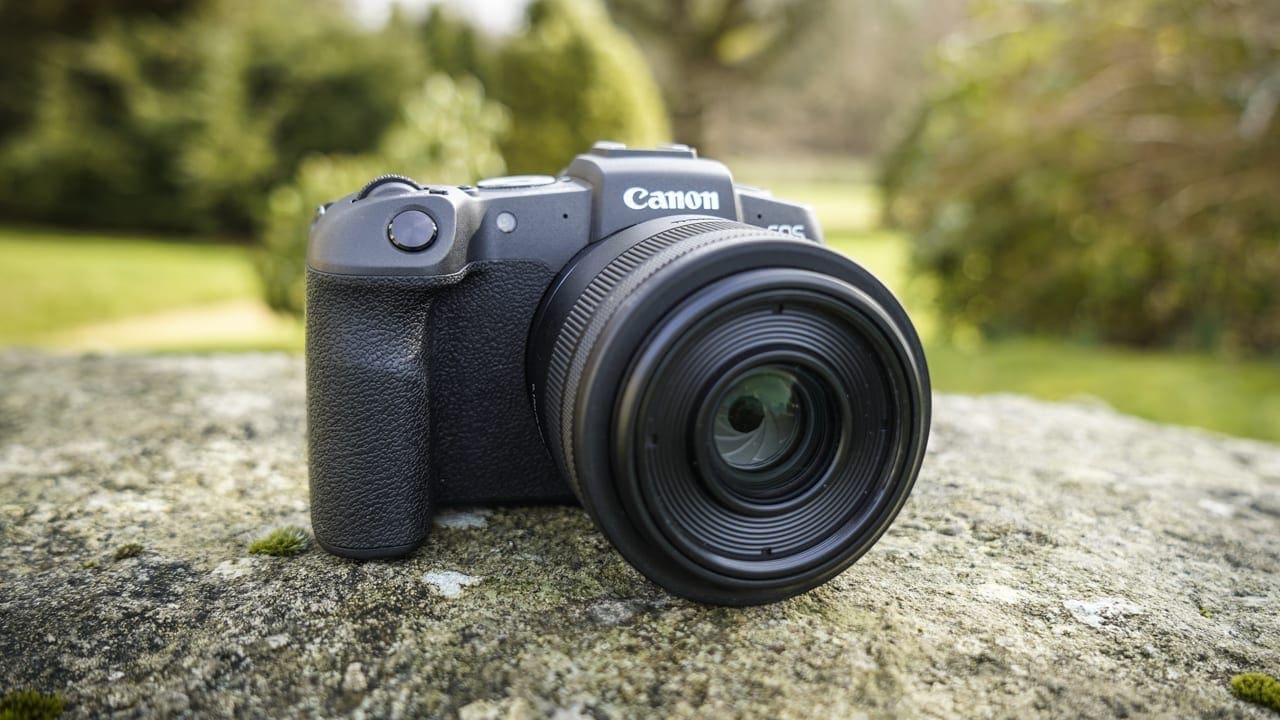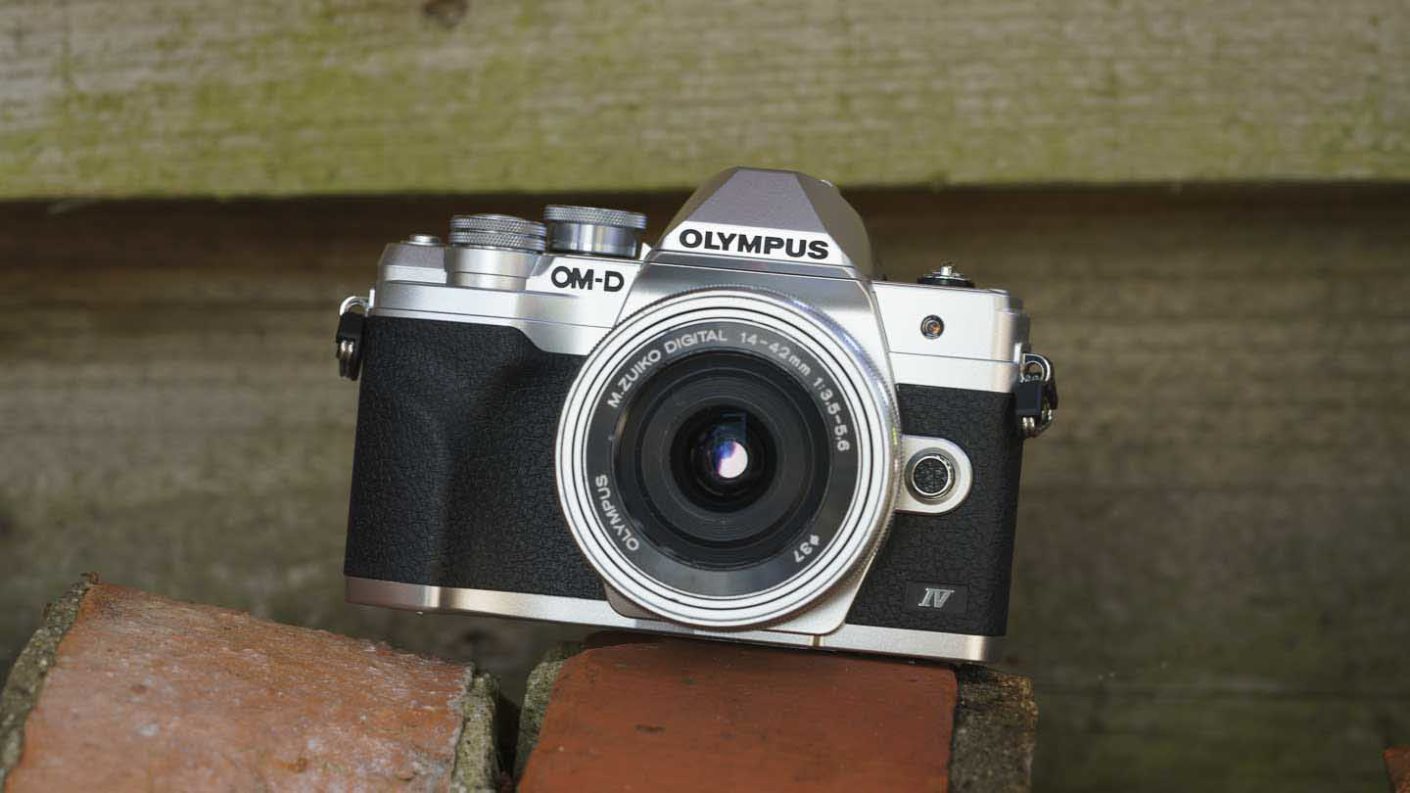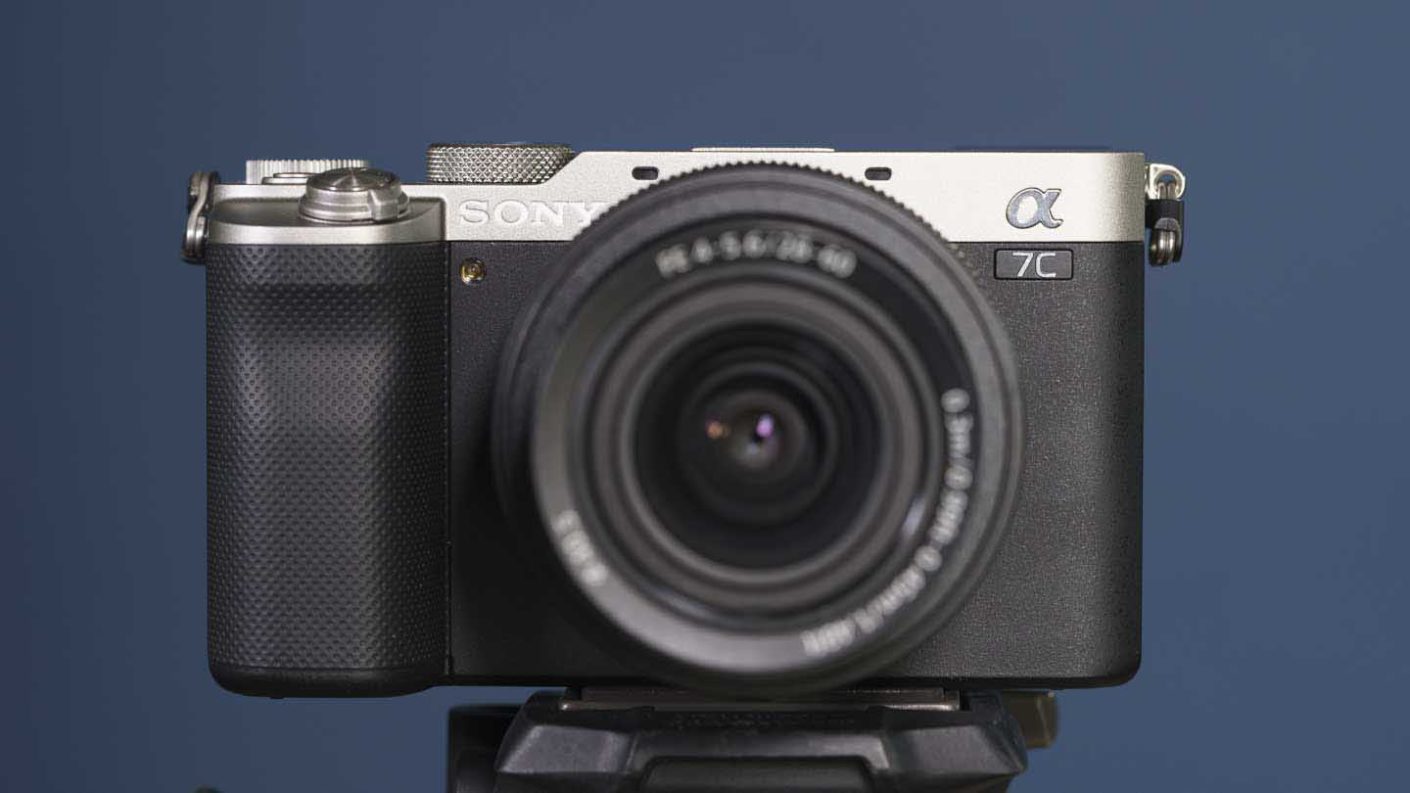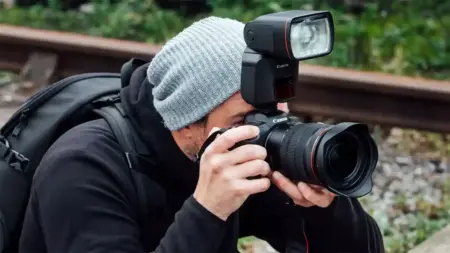When you first start out shooting nature photography you can sometimes feel pressured to learn everything at once. When you’re learning, you’ll be trying many different techniques that will provide the foundation for just about everything you’ll ever want to do with your camera. That’s why the best camera for beginner nature photography is one that offers ease of use but enough advanced features for you to grow with it as you develop your skills.
Whether you’re shooting in your garden or at a local nature reserve, you want a camera that can withstand the elements and be capable of capturing a variety of subjects, whether it’s a fast-moving insect or fungi in the low light of a forest floor.
What camera features do beginner nature photographers need?
Many photographers feel they need the best full-frame camera to shoot nature photography, but the best APS-C or Micro Four Thirds format cameras tend to be more affordable and can give you more reach given their crop factor. For instance, a Micro Four Thirds camera has a 2x focal length magnification factor, turning a 300mm lens into a 600mm lens, for example, whereas an APS-C format sensor has a 1.5-1.6x focal length magnification making a 300mm lens look like a 4500mm or 480mm optic. For more on crop factor, check out our guides on when to use APS-C lenses instead of full-frame and our breakdown of APS-C vs full-frame sensors.
When you’re looking at the best beginner cameras, you’ll usually find that their AF systems perform great in good light but may struggle a bit in low light. The best camera for beginner nature photography will have a lot of AF points spread across the frame. You can look for the cameras with the most AF points, but also check how sensitive these AF points are in low light.
Build quality is also important when choosing a camera for nature photography. Because you’ll be shooting outside in all sorts of conditions, the best camera for beginner nature photography should be able to withstand the cold, drizzle, wet grass, muddy fields, even lying down on sandy beaches. You’ll want a camera with a metal alloy body, if your budget allows for it. Also check that your intended camera has weather-proof seals along any joints and around the controls.
The best cameras for beginner nature photography you can buy today
With these factors in mind, let’s take a look at some of the best options for budding nature photographers. We’ve shot with all of these cameras, and you can read our more in-depth reviews, linked below, for a deeper analysis. For a deeper dive into the many different camera types and features available, check out our range of camera buying guides.
Nikon Z50
Specification
- Camera type: Mirrorless
- Sensor: 20.88Mp APS-C / DX (23.5x15.7mm) CMOS
- Processing engine: Expeed 6
- Lens mount: Nikon Z mount
- Sensitivity range: ISO 100-51,200; expands to 204,800
- Viewfinder: 0.39-inch 2,360,000-dot OLED electronic viewfinder
- Screen: Tilting 3.2–inch 1,040,000-dot touchscreen
- Autofocus: Hybrid (phase and contrast detection) AF with 209 AF points, Eye AF and Subject Tracking. Firmware V.20 adds Eye-detection AF for Animals as well as humans
- Continuous Shooting: 11fps with continuous AF and exposure metering
- Video: 4K at 30fps and Full-HD at 120fps
- Storage: SD/SDHC/SDXC UHS-I
- Connectivity: Snapbridge 2.6; Wi-Fi, Bluetooth
- Dimensions (W x H x D): 126.5 x 93.5 x 60 mm / 5 x 3.7 x 2.4-inches
- Weight: 450g / 15.9oz with battery and memory card but without body cap, 395g /14oz body only
Although the Nikon Z6 and Z7 are exceptional cameras, not all photographers prefer a full-frame option. Luckily, Nikon has the Z50 mirrorless camera that caters to those who desire an alternative. Experienced photographers will appreciate the Z50’s solid build and extensive feature set.
Capturing fast-moving subjects with precision is effortless thanks to the Z50’s exceptional autofocus system, even in low light conditions. In addition, the camera has Subject Tracking and Eye AF modes that are indispensable for portrait and social event photography.
Subject Tracking is available in Auto-area AF mode and is beneficial for subjects that move unpredictably. By selecting a tracking point on the screen or viewfinder, the Z50 will track the subject’s movements while keeping it sharp in Continuous AF mode.
The Z50 has a new 20.88Mp APS-C format sensor that pairs with the Expeed 6 processing engine. This combination allows for a native sensitivity range for stills of ISO 100-51,200, with expansion settings up to ISO 204,800. The video range is ISO 100-25,600.
Thanks to the Expeed 6 processing engine, the Z50 can shoot up to 11 frames per second with continuous autofocus and exposure metering in Continuous High Plus mode. The maximum rate in Continuous High mode is 5fps.
Find the best deals on the Nikon Z50 at Amazon UK and Amazon US.
£849
$989For
- Superb build and handling
- AF fast and accurate in low light
- Weatherproof
Sony A6600
Specification
- Camera type: Mirrorless
- Announced: 28th August 2019
- Lens mount: Sony E
- Sensor: 24.2MP APS-C Exmor CMOS (23.5 x 15.6mm) sensor
- Video: 4K (3840 x 2160) 25/30p video capture with log profiles
- Continuous shooting rate: Hi+: 11fps, Hi: 8fps, Mid: 6fps, Lo: 3fps
- Burst depth: In Hi+ 46 raw files, 99 Extra Fine Jpegs or 44 raw and Jpeg files
- Stabilisation: 5-axis in-body image stabilisation
- Sensitivity: ISO 100-32000 (expandable to ISO 50 – 102400)
- Autofocus : Fast Hybrid AF (phase-detection and contrast-detection each with 425 points), Face Detection and Real-Time Eye AF
- Viewfinder: 0.39-inch 2,359,296-dot OLED electronic viewfinder
- Screen: 3-inch 921,600-dot tilting touchscreen
- Storage: SD/SDHC/SDXC UHS-I or Memory Stick PRO Duo, Memory Stick PRO-HG Duo, Memory Stick Micro (M2)
- Dimensions (W x H x D): 120.0 x 66.9 x 69.3mm / 4 3/4 x 2 3/4 x 2 3/4-inches
- Weight: 503g / 1lb 1.8oz with battery and memory card
The Sony A6600 is Sony’s flagship APS-C format mirrorless camera and it’s aimed at enthusiast photographers and videographers who want to shoot in a variety of conditions. Inside is a 24.2MP Exmor CMOS image sensor, a BIONZ X image processor, and a front-end LSI that is present in Sony’s full-frame cameras, improving both still and video image quality.
One of the Sony A6600’s remarkable features is its in-body image stabilisation system, which provides a 5.0-step shutter speed advantage, employing a 5-axis stabilisation system.
The camera’s autofocus system is equally impressive, with 425 phase-detection AF points and 425 contrast-detection AF points, offering an autofocus acquisition time of 0.02 seconds. Real-time Tracking and Real-time Eye AF, powered by AI-based object recognition, improve tracking performance and speed for both humans and animals. The Real-time Eye AF technology helps photographers focus on composition, making it an exceptional feature for portrait and pet photography.
The Sony A6600 supports high-resolution internal 4K movie recording in Super 35mm format, without pixel binning, and includes interval shooting for time-lapse videos. Moreover, its 180-degree tiltable 3.0-type 921k-dot (approx.) LCD touch screen adds to the camera’s overall usability.
Although the Sony A6600 may have a different form factor than the full-frame Sony A7 series, it employs similar technology, which enables the camera to capture stunning images and videos with a broad range of subjects.
Find the best deals on the Sony A6600 at Amazon UK and Amazon US.
£1450
€1600For
- Very good image and video quality
- Fast, accurate AF system
- Excellent battery life (800+ shots)
Canon EOS R10
Specification
- Camera type: Mirrorless
- Announced: 24th May 2022
- Sensor: 24.2Mp APS-C format (22.3 x 14.9mm) CMOS
- Processor: Digic X
- Lens mount: Canon RF
- Sensitivity range: ISO 100-32,000 expandable to ISO 51,200
- AF system: Dual Pixel CMOS II AF phase detection with up to 4503 positions and 651 automatically selectable points
- Subject detection and tracking: Humans (Eyes/Face/Head/Body), Animals (Dogs, Cats and Birds) or Vehicles (Racing cars or Motor bikes)
- Viewfinder: 0.39-type 2,360,000-dots OLED EVF
- Screen: Touch-sensitive vari-angle 2.95-inch LCD with 1.04 million dots
- Video resolution: 4K (3840 x 2160) at up to 60p with 64% crop, 4K (3840 x 2160) at up to 30p from 6K, Full HD: (1920 x 1080) at up to 120p
- Max continuous shooting rate: Mechanical shutter: 15fps for up to 460 Jpegs or 29 raw files, Electronic shutter: 23fps for 70 Jpegs or 21 raw files
- Shutter speed range: Mechanical: 30-1/4000 sec, Bulb, Electronic: 30-1/16000 sec
- Built-in flash: GN 6m @ ISO 100
- Battery: Li-ion LP-E17, Viewfinder: Approx. 260 shots, Screen: Approx 430 shots
- Dimensions (W x H x D): 122.5 x 87.8 x 83.4mm
- Weight: 429g including battery and memory card
The Canon EOS R10 is an excellent choice for enthusiast photographers who want a compact and lightweight mirrorless camera that’s ideal for travel or nature photography.
Despite being smaller and lighter than the Canon R7, the EOS R10 still boasts impressive features and technology that make it more versatile than the EOS M-series cameras such as the Canon EOS M50 Mark II. It has a capable AF system with subject detection and can produce high-quality images up to ISO 12,800.
Although it sits below the R7 in Canon’s mirrorless camera line-up, the R10 shares many features with the flagship model. It features the same Dual Pixel CMOS AF II technology, allowing for phase detection focusing with every pixel capable of being used by the focusing system. This enables you to focus anywhere across the image.
While the R7’s AF system is sensitive down to -5EV, the Canon R10’s is sensitive down to -4EV. Additionally, the EOS R10 features Canon’s intelligent subject detection system, allowing you to focus on people, animals, or vehicles. If Eye detection is activated, the camera will prioritise the eyes of any detected subjects, making it an excellent option for people, pet and wildlife photographers.
Find the best deals on the Canon EOS R10 at Amazon UK and Amazon US.
£1350
€1649.99For
- Phase detection focusing and intelligent subject detection
- Same mount as Canon R3, R5 and R6
- Small and light
Canon EOS RP

Specification
- Camera type: Mirrorless
- Announced: February 2019
- Lens mount: RF
- Sensor: 26.2Mp full-frame (35.9 x 24mm) CMOS
- Processing engine: Digic 8
- Autofocus system: Phase detection using Dual Pixel CMOS AF with 4,799 focus positions
- Sensitivity range: Stills: ISO 100-40000 expandable to ISO 50-102400, Video: 4K Auto: 100-12800, H2: 102400, Full HD/HD - Auto: 100-25600, H2:102400
- Maximum continuous shooting rate: 5fps until card full with Jpegs or 50 raw files or 4 fps with AF Tracking
- Key video specifications: 4K (3840 x 2160) at 25/23.98fps, Full HD (1920 x 1080) at 59.94/50/29.97/25fps)
- Viewfinder: 0.39-inch 2.36-million-dot OLED
- Screen: Vari-angle 3-inch Clear View LCD II touchscreen with 1.04 million dots
- Dimensions (WxHxD): 132.5 x 85.0 x 70.0mm
- Weight: 485g with memory card and battery
Canon has equipped the EOS RP with a well-specified autofocus (AF) system that’s impressive. As with most Canon cameras, the imaging sensor is a Dual Pixel CMOS AF device, which employs phase detection. This type of focusing is generally quicker than contrast detection.
The Dual Pixel design means that each photoreceptor is divided into two, enabling all of them to play a role in focusing. The camera features 4,779 user-selectable AF points that cover 88% of the frame’s width and 100% of the height.
Canon claims that the RP’s AF system can function in lighting as low as -5EV when using an f/1.2 lens. This is one stop behind the EOS R, but it’s still remarkable.
The camera has Face and Eye detection capabilities, with Eye detection functioning with continuous AF.
Find the best deals on the Canon EOS RP at Amazon UK and Amazon US.
£1049
$999For
- Compact full-frame body
- Vari-angle touchscreen
- Attractively priced
Olympus OM-D E-M10 Mark IV

Specification
- Camera type: Micro Four Thirds mirrorless
- Announced: 4th August 2020
- Sensor: Four Thirds Type 20.3Mp Live MOS
- Processing engines: TruePic VIII
- Sensitivity range: ISO 80-25,600
- Viewfinder: 2,360,000-dot electronic with 1.23x magnification and 19.2mm eye point
- Stabilisation: 5-axis with up to 4.5EV shutter speed compensation
- Screen: 3-inch 1,037,000-dot tilting touchscreen
- Focus modes: Manual focus, Single AF, Continuous AF, Single AF + MF, AF Tracking, Super Spot AF, Face Detection AF
- Exposure modes: Programme, Aperture priority, Shutter priority, Manual, Bulb, Time, i-Auto, Scene Modes, Art Filter, Movie, Live Time, Live Composite, Advanced Photo Modes (Live Composite, Live Bulb, Multiple Exposure, HDR Backlight, Silent, Panorama, Keystone Compensation, AE bracketing, AF bracketing)
- Autofocus system: Contrast detection with up to 121 points
- Autofocus point selection modes: All target, Group target (9-areas), Single target
- Exposure metering: 324 zones Multi-pattern Sensing System with ESP, Spot, Centre weighted, Highlight and Shadow mode
- Art filers: Pop Art, Soft Focus, Pale & Light Colour, Light Tone, Grainy Film, Pin Hole, Diorama, Cross Process, Gentle Sepia, Dramatic Tone, Key Line, Water colour, Vintage, Partial Colour, Bleach Bypass, Instant Film
- Shutter speed: 1/16,000-60sec, Bulb to 30mins
- Maximum continuous shooting rate: High: 15 fps Low: 6.3 fps, Max. number of frames: High 42 raw files or 49 (LF) JPGs, Low: 945 raw files or until the card is full with (LF) JPGs
- Video resolution: 4K (3840 x 2160) / 30p, 25p, 24p / IPB (approx. 102 Mbps) Full HD (1920 x 1080) / 30p, 25p, 24p (MOV) Full HD (1920 x 1080) / 60p, 50p / IPB (F,N) / (MOV) HD (1280 x 720) / 60p, 50p, 30p, 25p, 24p (MOV)
- Time lapse: 4k, 1080p, 720p
- Flash: Built-in GN 7.2 (ISO200), hotshoe for external flash
- Connectivity: Wi-Fi, Bluetooth
- Multiple exposure: 2 frames with or without autogain
- Storage: SDHC/SDXC UHS-II
- Dimensions (WxHxD): 121.7x84.4x49mm
- Weight: 383g including battery and SD card
The Olympus OM-D E-M10 Mark IV may resemble compact cameras with smaller sensors, but it’s a mirrorless camera that accepts Micro Four Thirds mount lenses.
The camera’s mini-DSLR styling, similar to other Olympus OM-D cameras like the Olympus OM-D E-M5 Mark III, includes a 2,360,000-dot electronic viewfinder at the centre of the top plate. A touch-sensitive 3-inch 1,037,000-dot LCD on the back of the camera can be tilted up or down, making it easier to capture landscape orientation images from above or below head height. This LCD can also be flipped down through 180°, making it useful for taking selfies or vlogging.
Despite its entry-level classification, the OM-D E-M10 IV comes with advanced features such as Olympus’s Live Composite and Live Time modes, which make it easier to capture long exposure images and light painting shots.
You can find the best deals on the Olympus OM-D E-M10 Mark IV at Amazon UK and Amazon US.
£699
$649For
- Very compact, yet versatile camera
- Tilting screen can face forwards for selfies and vlogging
- Live Composite and Live Bulb mode make long exposure photography easy
Fujifilm X-T30 II
Specification
- Camera type: APS-C format mirrorless
- Sensor: 26.1Mp APS-C (23.5mm×15.6mm) X-Trans CMOS 4
- Processor: X Processor 4
- Lens mount: Fujifilm X
- Sensitivity: Stills: ISO 160- 12800 expandable to ISO 80-51,200, Video: ISO 160- 12800 expandable to ISO 80-25,600
- Autofocus system: Intelligent Hybrid AF (TTL contrast AF / TTL phase detection AF) with up to 425 points in a 25x17 grid
- Viewfinder: Electronic 0.39 inch approx. 2.36 million dots OLED Colour
- Screen: 3.0-inch 1.62 million dots touchscreen with 100% coverage
- Key video specifications: DCI 4K (17:9) (4096 x 2160) at 29.97p/25p/24p/23.98p 200Mbps/100Mbps up to approx. 30min, 4K(16:9) (3840 x 2160) at 29.97p/25p/24p/23.98p 200Mbps/100Mbps up to approx. 30min, Full HD(17:9) (2048 x 1080) at 59.94p/50p/29.97p/25p/24p/23.98p 200Mbps/100Mbps up to approx. 30min.
- Maximum continuous shooting: Electronic shutter: 20fps for JPEG: 79 frames, Compressed RAW: 20 frames, Lossless compression RAW: 17 frames, Uncompressed RAW: 17 frames, Mechanical shutter: 8fps for JPEG: 105 frames, Compressed RAW: 23 frames, Lossless compression RAW: 18 frames, Uncompressed RAW: 18 frames
- Dimensions (WxHxD): 118.4 x 82.8 x 46.8mm / 4.66 x 3.26 x 1.84-inch
- Weight: 382g including battery and memory card, 329g body only
The Fujifilm X-T30 II may be getting a bit old now, but Fujifilm still hasn’t introduced a successor and it remains one of the best cameras for beginner nature photography.
Most of the X-T30 II’s enhancements over its predecessor are the result of firmware and algorithm improvements. For instance, it now boasts enhanced autofocus algorithms similar to those seen on the X-T4, resulting in faster focusing and improved low-light sensitivity of up to -7.0EV when paired with the XF50mm F1.0 lens. The Face/Eye detection feature has also been refined and is more dependable, but it’s only useful when taking pictures of humans.
The X-T30 II also comes with two additional Film Simulation modes, Classic Neg and Eterna Bleach Bypass. Additionally, there are controls to adjust Clarity, Tone Curve, and Monochromatic Color, while the Auto White Balance can be set to White Priority and Ambience Priority. Furthermore, the Color Chrome FX Blue option enhances blue subjects.
The X-T30 II has a new feature that the X-T30 lacks – the ability to record 4K video continuously for up to 30 minutes.
Find the best deals on the Fujifilm X-T30 II at Amazon UK and Amazon US.
£770
$899For
- Excellent sensor
- Robust construction
- Traditional controls
Nikon D3500

Specification
- Camera type: APS-C (DX) format DSLR
- Announced: 30th August 2018
- Lens mount: Nikon F
- Sensor: 24.2Mp APS-C (23.5 x 15.6mm)
- Sensitivity range: ISO 100-25,600
- Autofocus system: Viewfinder: 11-point with 1 cross-type, Live View: Contrast detection
- Maximum continuous shooting rate: 5fps (frames per second)
- Viewfinder: Optical with pentamirror 95% coverage
- Screen: 3-inch TFT LCD with 921,000 dots
- Storage: SD/SDHC/SDXC UHS-I
- Dimensions: 124 x 97 x 69.5mm
- Weight: 365g body only
Despite being listed as discontinued, the Nikon D3500 can still be found on sale, and is one of the best cameras for beginner nature photography, if not one of the best cameras for beginners overall.
The D3500’s monocoque body houses an APS-C (DX) format sensor with 24.2 million effective pixels, paired with an Expeed 4 processing engine that delivers high-quality images.
Although the D3500 AF system has just 11 individually selectable points, it’s quick and can capture moving subjects in focus, even though it may not be as impressive as the AF system of the average mirrorless camera.
As a DSLR camera, the D3500 features an optical viewfinder that presents a natural view of the scene without any interpretation by the camera. There’s also a fixed 3-inch screen on the back with 921,000 dots that can be used to compose and review images in Live View mode, although the Live View autofocus system may be sluggish.
The Nikon D3500’s Guide Mode is an excellent feature that makes it a preferred choice for beginners. It teaches photography and camera controls using plain language, making it easier for users to learn.
Find the best deals on the Nikon D3500 at Amazon UK and Amazon US.
£479
$596For
- Excellent 24Mp APS-C format sensor
- Superb guide mode that teaches you about photography
- Compatible with an extensive range of lenses and accessories
Canon EOS M50 Mark II
Specification
- Camera type: Mirrorless
- Announced: USA: 14th October 2020, UK: 25th February 2021
- Sensor: 24.1Mp APS-C format (22.3 x 14.9mm) CMOS
- Processor: Digic 8
- Lens mount: Canon EF-M
- Sensitivity range: Stills: ISO 100-25,600 expandable to ISO 51,200, 4K Video: ISO 100-6400, Full HD & HD: ISO 100-12,800 expandable to ISO 25,600
- AF system: Dual Pixel CMOS phase detection with up to 3975 positions and 143 automatically selectable points
- Viewfinder: 0.39-type 2,360,000-dots OLED EVF
- Screen: Touch-sensitive vari-angle 3.0-inch LCD with 1,040,000 dots
- Video resolution: 4K (3840 x 2160) at 23.98, 25 fps Full HD: (1920 x 1080) at 59.94, 50, 29.97, 25, 23.976 fps), HD (1280 x 720) at 119.9, 100, 59.94, 50 fps
- Max continuous shooting rate: 10fps for up to 36Jpegs or 10 raw files
- Shutter speed range: 30-1/400 sec, Bulb
- Built-in flash: GN (ISO 100) 5
- Battery: Li-ion LP-E12, Viewfinder: Approx. 250 shots Live view: Approx 305 shots
- Dimensions (W x H x D): 116.3 x 88.1 x 58.7mm
- Weight: 387g (black), 390g (white) including battery and memory card
The EOS M50 Mark II has been one of Canon’s most popular mirrorless camera, even if the EOS M system will be no ore. The M50 Mark II was a minor refresh of the original, but builds on its capabilities. For starters, it retains the same 24Mp APS-C format sensor and Digic 8 processing engine as its predecessor.
Like its predecessor, the Canon EOS M50 Mark II is capable of shooting 4K video at up to 24p, but with an additional 1.5x crop applied to the framing. The autofocus system is based on contrast detection for 4K video, while the phase detection system enabled by the Dual Pixel sensor design is active for Full HD or stills shooting.
The key upgrades of the Mark II include eye tracking in both stills and video modes, vertical video recording, and the ability to stream live to YouTube video using a smartphone hotspot.
Find the best deals on the Canon EOS M50 Mark II at Amazon UK and Amazon US.
£589
$599For
- Excellent image quality
- Superb implementation of touch-control
- Good-quality viewfinder built-in
Sony A7C

Specification
- Announced: 15th September 2020
- Camera type: Full-frame mirrorless
- Sensor: 24.2Mp Full frame (35.6×23.8mm), Exmor R CMOS sensor
- Processor: Bionz X
- Lens mount: Sony E
- Sensitivity range: ISO 100-51,200, expandable to ISO 50-204,800
- Maximum continuous shooting rate: 10fps with full AF and metering
- Video resolution: 4K: 3840 x 2160 (4:2:0, 8bit, NTSC) (Approx.) 30p (100Mbps / 60Mbps), 3840 x 2160 (4:2:0, 8bit, NTSC) (Approx.) 24p (100Mbps / 60Mbps), 3840 x 2160 (4:2:0, 8bit, PAL) (Approx.) 25p (100Mbps / 60Mbps)
- Autofocus system: Hybrid with 693 phase detection points and 425 contrast detection points
- Eye AF: Stills: Human or Animal, Video: Human
- Viewfinder: 0.39-inch 2,359,296-dot OLED electronic viewfinder
- Screen: Vari-angle 3-inch 921,600-dot vari-angle touchscreen
- Stabilisation: 5-axis in-body image stabilisation giving up to 5EV shutter speed compensation
- Storage: SD/SDHC/SDXC (UHS-I/II)
- Dimensions (W x H x D): 124.0 x 71.1 x 59.7mm / 5 x 2 7/8 x 2 3/8inches
- Weight: 509g / 1lb 2.0oz with battery and card
If you’re after a compact full-frame camera that boasts Sony’s impressive autofocus and noise control systems, the Sony A7C is a great choice and won’t break the bank. It’s the smallest camera in the Sony A7-series cameras, with a flat-topped rectangular body that resembles the Sony A6600, and it features a vari-angle screen instead of a tilting monitor. Inside, the A7C has the same 24Mp sensor and core features as the Sony A7 III.
The A7C is an attractive option for travel and everyday photography when paired with the small collapsible FE 28-60mm f/4-5.6 kit lens.
However, Sony made a few compromises in handling when shrinking down the A7C. There’s no joystick on the back of the camera, and there’s only one control dial. Additionally, the electronic viewfinder is the type of unit more commonly found in APS-C format cameras.
If you’re willing to forgo the vari-angle screen and don’t mind a slightly larger camera, the Sony A7 III, which sits above the A7C in the range, is a great alternative and costs a bit less.
Find the best deals on the Sony A7C at Amazon UK and Amazon US.
£1709
$1798For
- Small for a full-frame camera
- Vari-angle screen
- Excellent AF system





Leave a Reply